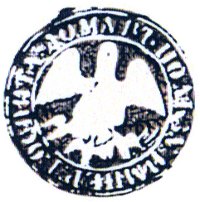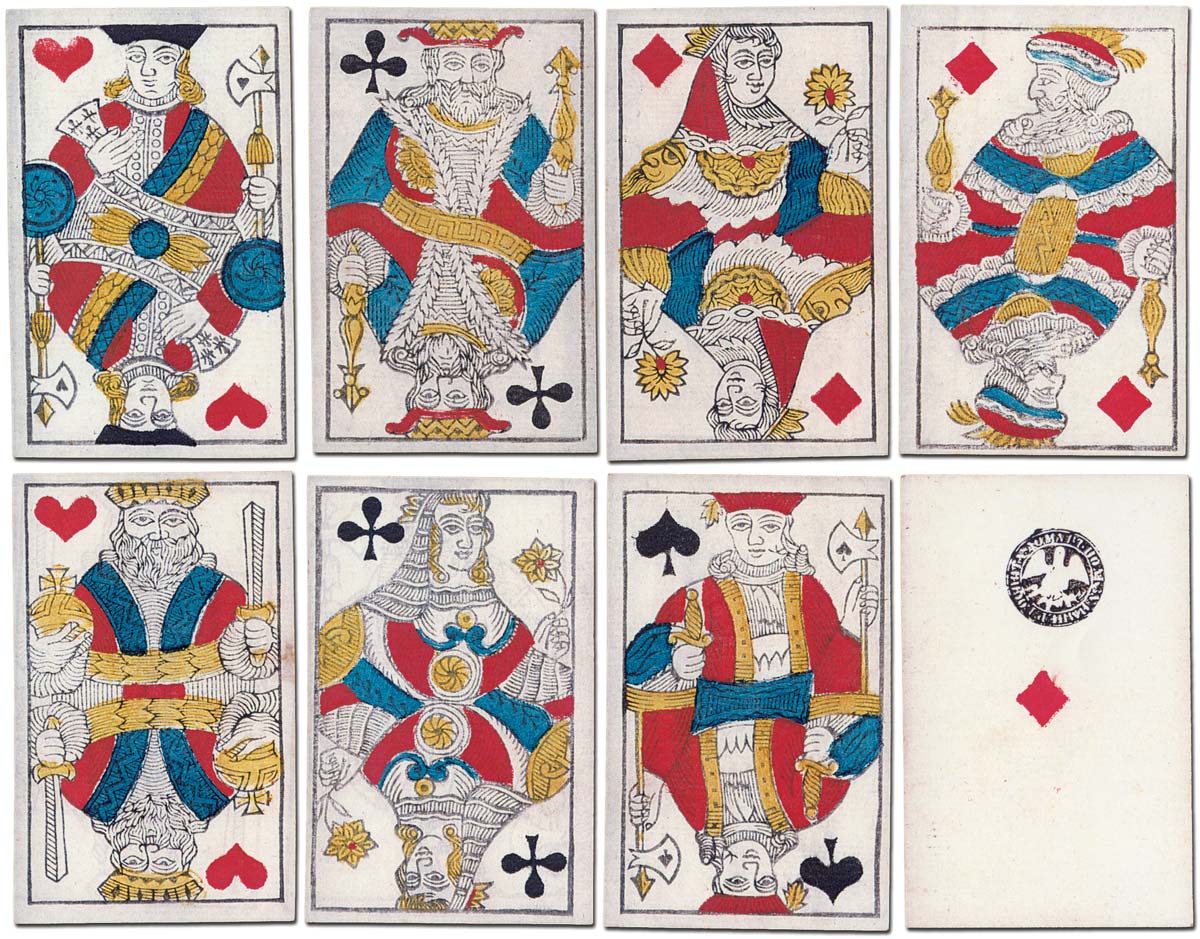Russian Standard Playing Cards
Cards from an early version of a Russian standard woodblock and stencil pack of circa 1820.

Russian Standard Playing Cards c.1820
Cards from a Russian standard woodblock and stencil pack of circa 1820, which are a Russian version of the double-ended ‘Paris’ pattern from France which was being adopted by many European manufacturers at that time. The ace of diamonds carries the tax stamp showing a pelican with outspread wings over a nest. The money raised by this tax went towards supporting the Imperial orphanages and funding the education and training of the foundlings. This tax stamp disappeared with the advent of the Revolution in 1917. After the USSR ended and the Colour Printing Plant closed down, several small firms started to print playing cards, including modern versions of this deck.

Above: cards from a Russian standard woodblock and stencil pack of circa 1820. Image courtesy Dudley Ollis.

By Simon Wintle
Member since February 01, 1996
I am the founder of The World of Playing Cards (est. 1996), a website dedicated to the history, artistry and cultural significance of playing cards and tarot. Over the years I have researched various areas of the subject, acquired and traded collections and contributed as a committee member of the IPCS and graphics editor of The Playing-Card journal. Having lived in Chile, England, Wales, and now Spain, these experiences have shaped my work and passion for playing cards. Amongst my achievements is producing a limited-edition replica of a 17th-century English pack using woodblocks and stencils—a labour of love. Today, the World of Playing Cards is a global collaborative project, with my son Adam serving as the technical driving force behind its development. His innovative efforts have helped shape the site into the thriving hub it is today. You are warmly invited to become a contributor and share your enthusiasm.
Related Articles

Luditz Pattern by Georg Geiselreiter
The discovery of 2024 changes the current state of knowledge of the history of this pattern.

Czech National Patterns by S.D. Modiano
Modiano produced cards with the Prague and Trappola patterns in the early 20th century.

Doppel-Deutsche Karten by Bratří Willnerové, Teplice
This deck from local manufacturer Bratří Willnerová offers a standard version of the popular Central...

Prager Pattern by Bratří Willnerové, Teplice
Traditional single-ended Prager pattern by Willner Brothers from northern Bohemia.

International pattern from Russia
Colourful international pattern cards from Russia sold in Latvia.

Egyptium
“Egyptium” is a hand-illustrated deck of fantasy playing cards with artwork by Russian artist Oleg S...

Russian Circus deck
The Russian Circus deck published by the Imperial Playing Card Factory, St Petersburg.

English Pattern by B.P. Grimaud
Standard English pattern published by B.P. Grimaud with engraving by F. Simon, c.1880.

Playing cards with prints by Sumio Kawakami
Woodblock print designs created by Sumio Kawakami in 1938-9, each card having a different illustrati...

English cards from the reign of Charles II
This article explores a historic pack of English playing cards from circa 1675, likely used by King ...

Why our playing-cards look the way they do
Analysis of early playing card designs: origins, suit differences, standardization, technological ad...

Introduction to Collecting Themes
Playing cards can be broadly categorised into standard and non-standard designs, with collectors app...

Wedding of Krechinsky • Свадьба Кречинского
A pack of cards depicting characters from the famous play "The Wedding of Krechinsky" by Sukhovo-Kob...

Russian folk art playing cards
Russian folk art playing cards produced by Natalia Silva, USA, 2017.

Branle playing cards
‘Branle’ playing cards inspired by a 12th-century dance, produced by Noir Arts, USA, 2015.

Venus et Cupidon
“Venus et Cupidon” from Costante Costantini in his distinctive woodcut style.
Most Popular
Our top articles from the past 28 days

